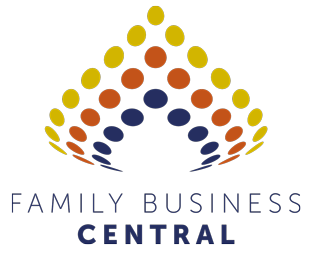
Five ways to future-proof your family business
How to run a family business successfully now, and well into the future
What could be more satisfying than passing on a thriving, robust and profitable business to your children or grandchildren and seeing them benefit and grow from it? Surely, this is the ultimate measure of a successful family business. But it takes a long-term view and an open mind to achieve enduring success. We take a look at how important it is to make planning for the future a key part of the family business model.
A successful family business is one that spans generations. And keeping a family business thriving through the years requires more than just profitability and growth. It requires conversations around the complex personal and cultural issues within your family, and a willingness to have the hard conversations. You can bury your head in the sand about the future, but that won’t make it go away. Future-proofing shouldn’t be a chore or something to avoid. It is an ongoing process that provides security for your family members now and in the future, and along the way adds real value to the family and the business.
So is it possible to future-proof your family business when – sadly – crystal balls don’t exist?
The short answer is yes. There are several things you can do to help steer your ship confidently into the future. However, we all know nothing is certain in life, and as our world spins rapidly through technological, geographical and generational change, it’s important to keep an open mind.
Here are five things you can do to ensure you are in the best position to future-proof your family business.
1. Values
A set of clearly-defined values not only drive and guide the business operation but also drive and guide the culture of your family
Values are at the very heart of a family business. While you may have a rough idea of your personal values and how you see them operating in the family, they need to be discussed and put down on paper to become meaningful.
One of the first tasks I set for families when we start talking about future-proofing is defining values. By identifying the values, you provide clear guidelines that can be drawn upon whenever anybody in the family needs to make a decision.
How to identify your family’s values. The values which define your family should be more than a generic statement. I’m sure we’re all familiar with those fluffy value statements which get printed out and stuck on the wall and never thought of again.
I recommend setting aside time to identify and articulate your values. A powerful way to do this is to identify significant family events – both positive and negative – and discuss the values demonstrated by family members during these times. This activity helps identify the core values already operating. Continue the conversation until you have identified between three and six values and the actual range of behaviours that demonstrate these values. Pulling out the behaviours is critical to this process—otherwise, they stay at the fluffy level.
By the end of the process, you will have a set of identified values backed up by a list of recommended behaviours below that. Add these values to your family charter or family constitution and use them at every opportunity where there is a decision to be made.
Well done, you have now created a very powerful document based on core beliefs and behaviours, which you and the family can use to guide everyone around what to do and how to do it – now and into the future.
2. Vision
Know what your long term vision and goals are and how they link to the shorter-term goals.
While it may sound obvious, it’s surprising how many family businesses are not clear on where they are going in the long-term. Long-term thinking is critical when you are in a business that you hope will last for many generations. This is particularly important because often different family members have different visions that they all feel very strongly about. But if these visions are not aligned, people can work against each other.
A vision for the family business that looks forward at least 10 to 20 years is a simple yet effective way to keep everyone aligned. It provides clarity and confidence on what type of business you are in and how it should be run.
Without a clear vision, things which may seem like a good idea now could actually lead to disastrous consequences in the long-term. For example, the family may decide to make an investment that in the short term doesn’t bring as high returns, but because there is a long-term plan, that investment will eventually bring substantial benefit in more ways than just money.
Clarity keeps the peace! When all family members understand the vision, there is less likely to be conflict and disagreement because everyone is heading in the same direction.
3. Succession
Succession planning for family business can be a challenge. It is the elephant in the room that has to be addressed at some point.
In my many years of family business consulting, I can attest that it is always better to start the succession conversation earlier than later. If succession is something that has always been spoken about, there is less awkwardness or tension around the subject.
While you personally may be struggling to think about succession, it is something that the generations below you need to have. A family business succession plan provides a level of certainty not only for the family but for employees, suppliers, customers, the board and other key stakeholders. Without a succession plan, it is far more difficult for the next generation to develop and grow into their roles as future leaders and owners of the business. And for you, you get peace of mind knowing the next leaders have the required skills and knowledge to capably run the business when it comes time for you to step away.
Some in the current generation see succession as “being put out to pasture”. This is far as from reality as possible – indeed it is the opportunity for the current generation to pick and choose the exact things they want to do and none of the things they hate doing! We know of 100 year olds still working in the business.
Make succession planning and talking about succession a comfortable topic. If the family establishes a good culture around this, it can guide generations to come on how to work through future successions.
4. Diversify
Now, more than ever, diversification matters. If Covid has taught us anything, it is that nothing can be taken for granted.
In the early days of the global pandemic, many businesses thought they were sufficiently diversified and would be able to survive. For some this was the case, but for others it has been hard. The truth is, none of us had any idea of the immense impact Covid would bring. Some businesses thrived in a changed marketplace, others did not.
While diversification may seem like a brilliant idea when times are tough, it’s important to first weigh up any moves carefully. If you move too far away from your core strengths or knowledge base, you are operating in an area where you lack experience, and the risks are high. A diversification matrix is an extremely helpful way for the family to think through what areas the business could move into and the potential risks involved if it did decide to make a change.
Encourage innovation and entrepreneurship amongst family members, and you may be surprised by what bubbles to the surface. One fresh idea may bring considerable benefits to the business, which organically leads to diversification. It also gives that family member a level of support – both financial and non-financial- which they may not get if they were in a different type of organisation.
5. Family culture and communication
Building and maintaining family culture and communication is vital to the longevity of the family business.
Some family businesses in Europe are in their 13th or 14th generation. They have supported hundreds of family members and created a phenomenal legacy. As well as working hard on the business, these long-lasting family businesses have clearly put in the work to maintain and communicate family culture. Again, this is an active process, not one that is left to chance.
While Australian and New Zealand family businesses don’t have quite that sort of track record yet, there are many in their second, third and fourth generation. These businesses use key aspects of family governance, for example, the Family Forum, to build and maintain culture while fostering good communication between family members.
We are just starting to talk to a company that produces specialised software for large, multi-generational family businesses. This innovative platform is designed to streamline communication across all sectors of the family and business and is a great way to ensure that everyone is kept up to date with what is going on. We’ll keep you updated
We are in uncertain and fast-moving times, and there is no silver bullet for how to run a family business successfully. But it is clear there are many ways family businesses can stay one step ahead and put themselves in a position to face the future and provide certainty for younger generations.
If it’s time to talk about future-proofing your family business and family business succession planning, get in touch. We’re here to help.

